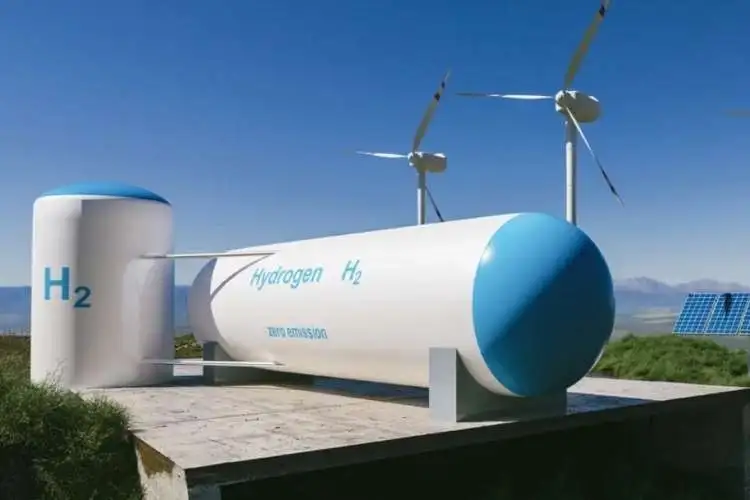The global push toward green hydrogen has put the spotlight on electrolysers, devices that split water into hydrogen and oxygen using electricity. The market for these devices is projected to grow exponentially, with an estimated compound annual growth rate of 24.2% over the next decade, potentially reaching $5.7 billion by 2034. But this growth is not solely due to increasing demand for clean energy. A series of technological breakthroughs is reshaping the market, leading to more efficient, cost-effective, and durable electrolysers that could revolutionise green hydrogen production worldwide.
Traditional electrolysers — Alkaline, Proton Exchange Membrane (PEM), Anion Exchange Membrane (AEM), and Solid Oxide Electrolyser Cells (SOEC) — have been driving hydrogen production across the world. Yet, these systems have long faced significant challenges. Membranes, for example, are vital in separating hydrogen and oxygen but are fragile and expensive, with PEM and AEM electrolysers relying on rare and costly metals like platinum and iridium. These limitations have prompted a wave of innovation, leading to membrane-less designs, advanced software integration, and novel electrode surface patterns, all of which are pushing the boundaries of what is possible with hydrogen electrolysers.
READ | Universities must reimagine their role in higher education
Innovations in electrolyser design
Newtrace and Advanced Ionics stand at the forefront of this innovation wave. Newtrace has developed a membrane-less electrolyser using advanced fluid engineering to eliminate the need for costly and delicate membranes. By directing water flow to prevent gas mixing, Newtrace simplifies the system, reduces maintenance costs, and enhances durability. Additionally, by using transition metal electrocatalysts instead of rare metals, they cut costs and mitigate supply chain risks. Their integrated system management software optimises electrolyser performance through real-time monitoring and predictive analytics, offering a more resilient and cost-effective solution for green hydrogen production.
Advanced Ionics is also making strides by introducing a medium-temperature vapor phase electrolyser that merges the best features of solid oxide and alkaline electrolysers. Their Symbion cell technology eliminates the need for membranes, simplifying the design and enhancing durability. By operating at around 300°C, the system balances high efficiency with lower capital costs, making it a viable option for heavy industries such as steel manufacturing and ammonia production.
Addressing efficiency hurdles
Efficiency has always been a critical concern in the electrolyser market. Inefficiencies can arise from the formation of gas bubbles on electrode surfaces, blocking parts of the electrode from participating in the electrochemical reaction. Traditional models overestimated this issue, assuming that entire areas shadowed by bubbles were inactivated. However, recent findings by researchers at MIT and Argonne National Laboratory have shown that only the small area where the bubble contacts the surface is actually blocked. This insight has led to the development of new electrode designs that can minimise bubble contact area, significantly improving the efficiency of the process.
By engineering electrodes to control bubble formation and size, manufacturers can boost the performance of gas-evolving electrodes used in critical processes like hydrogen production. Moreover, this breakthrough opens the door to new electrode architectures that reduce the use of precious metals while enhancing overall performance. The Bubble-induced electrochemically active surface area (BECSA) metric, introduced by the researchers, provides a new way of measuring and improving electrode efficiency, potentially cutting energy consumption and reducing material waste in electrolyser systems.
Cutting costs, overcoming supply chain barriers
The cost of electrolysers has been a major barrier to scaling hydrogen production. Innovations like those pioneered by Newtrace and Advanced Ionics are key to breaking down these barriers. By eliminating the need for rare metals and membranes, and by simplifying designs, these companies are making electrolysers more affordable and accessible. This is especially crucial as the market moves toward decentralised hydrogen production, where electrolysers are installed near consumption points, reducing transportation costs and promoting energy independence.
Start-ups like sHYp and Hysata are also working on revolutionary designs that could further drive down costs. sHYp is developing a membrane-less electrolyser capable of producing hydrogen directly from seawater or brine, making it ideal for offshore applications. Hysata, on the other hand, is focusing on ultra-efficient capillary-fed electrolysers with bubble-free operation, targeting sectors like steel and chemical production. These innovations could reshape the market by offering cheaper, more efficient alternatives to existing technologies.
Challenges and the road ahead
Despite the promise of these new technologies, challenges remain. Both Newtrace and Advanced Ionics face the hurdle of scaling up their production and entering new markets. Advanced Ionics, backed by industry giants like BP and Shell, is focused on overcoming technical challenges related to sealing technologies and achieving consistent performance at larger scales. Newtrace, which has already deployed its first membrane-less electrolyser with Bharat Petroleum, is working on expanding its reach, particularly in the Middle East’s industrial sector.
The competitive landscape of the electrolyser market is rapidly evolving, with start-ups and established companies racing to capture market share. International collaboration and trade will play a pivotal role in this shift. Countries like Japan and Korea are expected to see significant market expansion in the coming decade. Japan, in particular, is poised to grow at a staggering 26.7% CAGR through 2034, driven by the country’s aggressive push toward green hydrogen as a key component of its energy strategy.
The electrolyser market is on the cusp of a transformative shift. Innovations in electrode design, membrane-less systems, and software integration are addressing long-standing inefficiencies, cutting costs, and enhancing durability. As these technologies continue to scale, they will play a crucial role in the global transition to green hydrogen. Companies like Newtrace, Advanced Ionics, and a wave of other innovators are leading the charge, offering solutions that could make hydrogen production not only more efficient but also more accessible and sustainable.
As the market grows and evolves, keeping an eye on these emerging technologies will be crucial for stakeholders looking to capitalise on the burgeoning green hydrogen economy. The future of clean energy is here, and electrolysers are at the heart of this green revolution.

